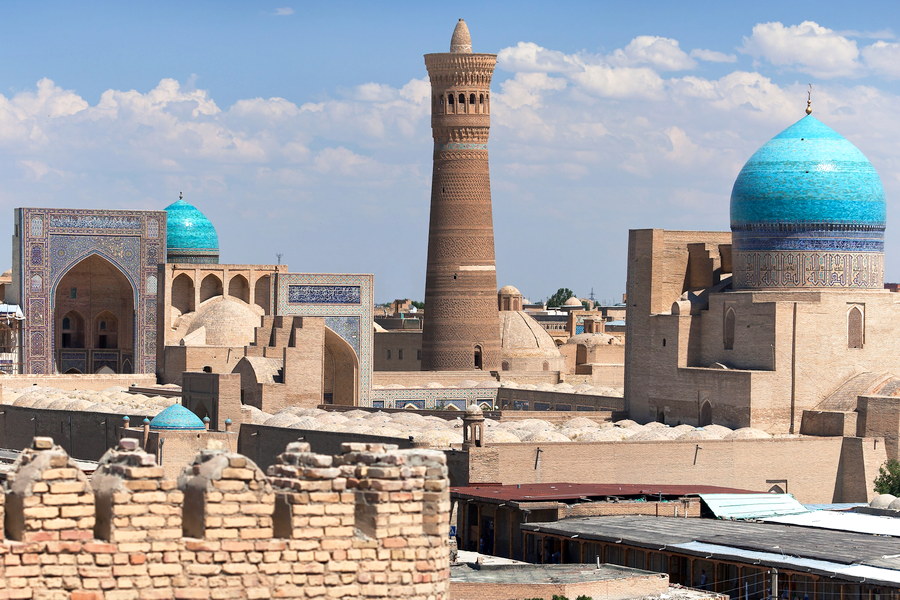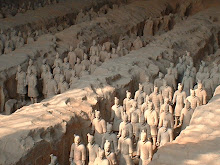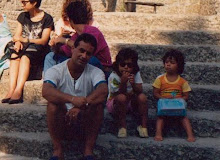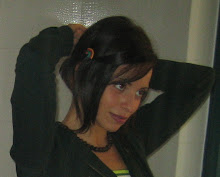the Federal Republic of Germany is a country in West-central Europe. As a nation-state, the country was unified near the end of the Franco-Prussian War in 1871. After World War II, Germany's territory was divided into two separate states: the sectors controlled by France, the United Kingdom, and the United States called Federal Republic of Germany; and the Soviet Zone established the German Democratic Republic , informally known as "West Germany" and "East Germany" and the two parts of Berlin as "West Berlin" and "East Berlin".
West Germany, established as a liberal parliamentary republic with a "social market economy", was allied with the United States, the UK and France. The country eventually came to enjoy prolonged economic growth beginning in the early 1950s East Germany was at first occupied by, and later (May 1955) allied with, the USSR. An authoritarian country with a Soviet-style command economy, East Germany soon became the richest, most advanced country in the Warsaw Pact, but many of its citizens looked to the West for political freedoms and economic prosperity. The Berlin Wall, built in 1961 to stop East Germans from escaping to West Germany, became a symbol of the Cold War. However, tensions between East and West Germany were somewhat reduced in the early 1970s and reunification on 3 October 1990.
Berlin is the capital city and it is the major center in European politics, culture, media, and science infact Berlin is the third most-visited tourist destination in the EU
Now let s have a tour:
· The Fernsehturm (TV tower) at Alexanderplatz ,in Mitte, is the second highest building in the European Union Built in 1969, it is visible throughout most of the central districts of Berlin. The city can be viewed from its 204 meter high observation floor. Starting here the Karl-Marx-Allee heads east, an avenue lined by monumental residential buildings, designed in the Socialist Classicism Style of the Stalin era. Adjacent to this area is the Rotes Rathaus (Red City Hall), with its distinctive red-brick architecture. The previously built-up part in front of it is the Neptunbrunnen, a fountain featuring a mythological scene.
· The East Side Gallery is an open-air exhibition of art painted directly on the last existing portions of the Berlin Wall. It is the largest remaining evidence of the city's historical division. It has recently undergone a restoration.
· The Brandenburg Gate is an iconic landmark of Berlin and Germany. It also appears on German euro coins (10 Cent / 20 Cent and 50 Cent). The Reichstag building is the traditional seat of the German Parliament, renovated in the 1950s after severe World War II damage. The building was again remodeled by British architect Norman Foster in the 1990s and features a glass dome over the session area, which allows free public access to the parliamentary proceedings and magnificent views of the city.
· Potsdamer Platz is an entire quarter built from scratch after 1995 and was not rebuilt as it was divided by the Wall. To the west of Potsdamer Platz is the Kulturforum, which houses the Gemäldegalerie, and is flanked by the Neue Nationalgalerie and the Philharmonic. The Memorial to the Murdered Jews of Europe, a Holocaust memorial, is situated to the north. The area around Hackescher Markt is home to the fashionable culture, with countless clothing outlets, clubs, bars, and galleries. This includes the Hackesche Höfe, a conglomeration of buildings around several courtyards, reconstructed around 1996. Oranienburger Straße and the nearby New Synagogue were the center of Jewish culture before 1933, and regains being it today.
· Berlin has one of the most diverse and vibrant nightlife scenes in Europe.After the fall of the Berlin Wall in 1989, many buildings in Mitte, the former city center of East Berlin, were renovated. Many had not been rebuilt since World War II. Illegally occupied by young people, they became a fertile ground for all sorts of underground and counter-culture gatherings. It is also home to many nightclubs and techno clubs .The Linientreu, near the Kaiser Wilhelm Memorial Church, has been well known since the 1990s for techno music. The LaBelle discotheque in Friedenau became famous as the location of the 1986 Berlin discotheque bombing. SO36 in Kreuzberg originally focused largely on punk music but today has become a popular venue for dances and parties of all kinds. SOUND, located from 1971 to 1988 in Tiergarten and today in Charlottenburg, gained notoriety in the late 1970s for its popularity with heroin users and other drug addicts as described in Christiane F.'s book Wir Kinder vom Bahnhof Zoo.( We, children from Bahnhof Zoo)
· The Karneval der Kulturen, a multi-ethnic street parade celebrated every Pentecost weekend, and the Christopher Street Day, which is Central Europe's largest gay-lesbian pride event and is celebrated the last weekend of June, are openly supported by the city's government. Berlin is also well known for the techno carnival Love Parade and the cultural festival Berliner Festspiele, which include the jazz festival JazzFest Berlin.




































没有评论:
发表评论